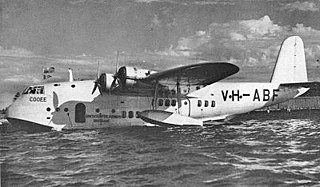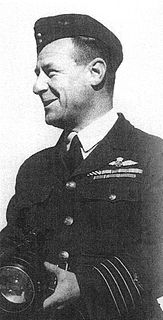
The Millennium Bridge, officially known as the London Millennium Footbridge, is a steel suspension bridge for pedestrians crossing the River Thames in London, linking Bankside with the City of London. It is owned and maintained by Bridge House Estates, a charitable trust overseen by the City of London Corporation. Construction began in 1998, and it initially opened on 10 June 2000.

A laptop, laptop computer, or notebook computer is a small, portable personal computer (PC) with a screen and alphanumeric keyboard. These typically have a clamshell form factor, typically having the screen mounted on the inside of the upper lid and the keyboard on the inside of the lower lid, although 2-in-1 PCs with a detachable keyboard are often marketed as laptops or as having a laptop mode. Laptops are folded shut for transportation, and thus are suitable for mobile use. Its name comes from lap, as it was deemed practical to be placed on a person's lap when being used. Today, laptops are used in a variety of settings, such as at work, in education, for playing games, web browsing, for personal multimedia, and general home computer use.

A flying boat is a fixed-winged seaplane with a hull, allowing it to land on water, that usually has no type of landing gear to allow operation on land. It differs from a floatplane as it uses a purpose-designed fuselage which can float, granting the aircraft buoyancy. Flying boats may be stabilized by under-wing floats or by wing-like projections from the fuselage.

A seaplane is a powered fixed-wing aircraft capable of taking off and landing (alighting) on water. Seaplanes are usually divided into two categories based on their technological characteristics: floatplanes and flying boats; the latter are generally far larger and can carry far more. Seaplanes that can also take off and land on airfields are in a subclass called amphibious aircraft, or amphibians. Seaplanes were sometimes called hydroplanes, but currently this term applies instead to motor-powered watercraft that use the technique of hydrodynamic lift to skim the surface of water when running at speed.

A Tuned Mass Damper (TMD), also known as a harmonic absorber or seismic damper, is a device mounted in structures to reduce mechanical vibrations, consisting of a mass mounted on one or more damped springs. Its oscillation frequency is tuned to be similar to the resonant frequency of the object it is mounted to, and reduces the object's maximum amplitude while weighing very much less than it.

Dubbo is a city in the Orana Region of New South Wales, Australia. It is the largest population centre in the Orana region, with a population of 38,392 at June 2018.

Sir Francis Charles Chichester KBE was a British businessman, pioneering aviator and solo sailor.

An overhead power line is a structure used in electric power transmission and distribution to transmit electrical energy across large distances. It consists of one or more uninsulated electrical cables suspended by towers or poles.

In fluid dynamics, vortex shedding is an oscillating flow that takes place when a fluid such as air or water flows past a bluff body at certain velocities, depending on the size and shape of the body. In this flow, vortices are created at the back of the body and detach periodically from either side of the body forming a Von Kármán vortex street. The fluid flow past the object creates alternating low-pressure vortices on the downstream side of the object. The object will tend to move toward the low-pressure zone.
Robert Venour Dulhunty is chiefly remembered as being the first permanent white settler of what has since become the City of Dubbo, in the rural heartland of the Australian state of New South Wales.

A Stockbridge damper is a tuned mass damper used to suppress wind-induced vibrations on slender structures such as overhead power lines, long cantilevered signs and cable-stayed bridges. The dumbbell-shaped device consists of two masses at the ends of a short length of cable or flexible rod, which is clamped at its middle to the main cable. The damper is designed to dissipate the energy of oscillations in the main cable to an acceptable level.

The Yokosuka E14Y was an Imperial Japanese Navy reconnaissance seaplane transported aboard and launched from Japanese submarine aircraft carriers such as the I-25 during World War II. The Japanese Navy designation was "Type 0 Small Reconnaissance Seaplane" (零式小型水上偵察機).
Conductor gallop is the high-amplitude, low-frequency oscillation of overhead power lines due to wind. The movement of the wires occurs most commonly in the vertical plane, although horizontal or rotational motion is also possible. The natural frequency mode tends to be around 1 Hz, leading the often graceful periodic motion to also be known as conductor dancing. The oscillations can exhibit amplitudes in excess of a metre, and the displacement is sometimes sufficient for the phase conductors to infringe operating clearances, and causing flashover. The forceful motion also adds significantly to the loading stress on insulators and electricity pylons, raising the risk of mechanical failure of either.

RAAF Base Rathmines is a heritage-listed former RAAF Second World War seaplane base and now used as community venues, sports venues and a visitor attraction at Dorrington Road, Rathmines, City of Lake Macquarie, New South Wales, Australia. It was in use as an RAAF base from 1939 to 1961. It is also known as Rathmines Park, former RAAF Seaplane Base, Flying Boat Base, Rathmines Aerodrome and Catalina Base. The property is owned by Australian Christadelphian Bible School, Disability Life Enrichment, Don Geddes Nursing Home and Lake Macquarie City Council. The remains of the former air base was added to the New South Wales State Heritage Register on 25 November 2005.

The Supermarine S.4 was a 1920s British single-engined single-seat monoplane racing seaplane built by Supermarine to compete in the 1925 Schneider Trophy. It crashed and was destroyed before the competition started.

William Macquarie Cowper was an Australian Anglican archdeacon and Dean of Sydney.

Air Commodore Hippolyte Ferdinand (Frank) De La Rue, CBE, DFC was a senior commander in the Royal Australian Air Force (RAAF). Joining the Mercantile Marine as a youth, he became a pilot in Britain's Royal Naval Air Service during World War I. In 1918, he was given command of No. 223 Squadron in the newly formed Royal Air Force. The following year he took charge of No. 270 Squadron RAF in Egypt. Returning to Australia, De La Rue joined the short-lived Australian Air Corps in 1920, and became a founding member of the RAAF in March 1921. Specialising in maritime aviation, he led seaplane formations based at Point Cook, Victoria, during the 1920s and early 1930s.

The Dulmont Magnum is an early laptop computer designed initially by Australian power line equipment manufacturer Dulmison Pty Ltd and subsequently marketed by Dulmont Pty Ltd. Exhibited in September 1983, it was the world's first true battery-powered laptop computer.
The PowerSwim is a diver powered propulsion comprising two pairs of high aspect ratio hydrofoils in a device somewhat like two pairs of long thin airplane wings, one pair at each end of an axis. The axis is fastened to a scuba diver's shins by straps round the legs. The longer pair of wings is at the hips and the shorter pair is at the ankles. The wings rotate to a limited angle on axles near their front edges, and thus on upstroke and downstroke they propel water backwards. It is claimed that the length of the front wing lets it operate outside the cone of wake that starts at the diver's shoulders. It is claimed to let a scuba diver or swim much faster (250%) than with swimfins for the same amount of bodily effort, if used correctly, and being not motorized, it makes no motor noise to be heard by hostile hydrophones, but noise would occur if the front wings are allowed to hit the diver's hips at end of upstroke. It works somewhat like a penguin's or turtle's front flippers. Its estimated cost is less than $500. The diver uses it by moving his legs up and down together, letting the knees bend and straighten.
All-dielectric self-supporting (ADSS) cable is a type of optical fiber cable that is strong enough to support itself between structures without using conductive metal elements. It is used by electrical utility companies as a communications medium, installed along existing overhead transmission lines and often sharing the same support structures as the electrical conductors.
















